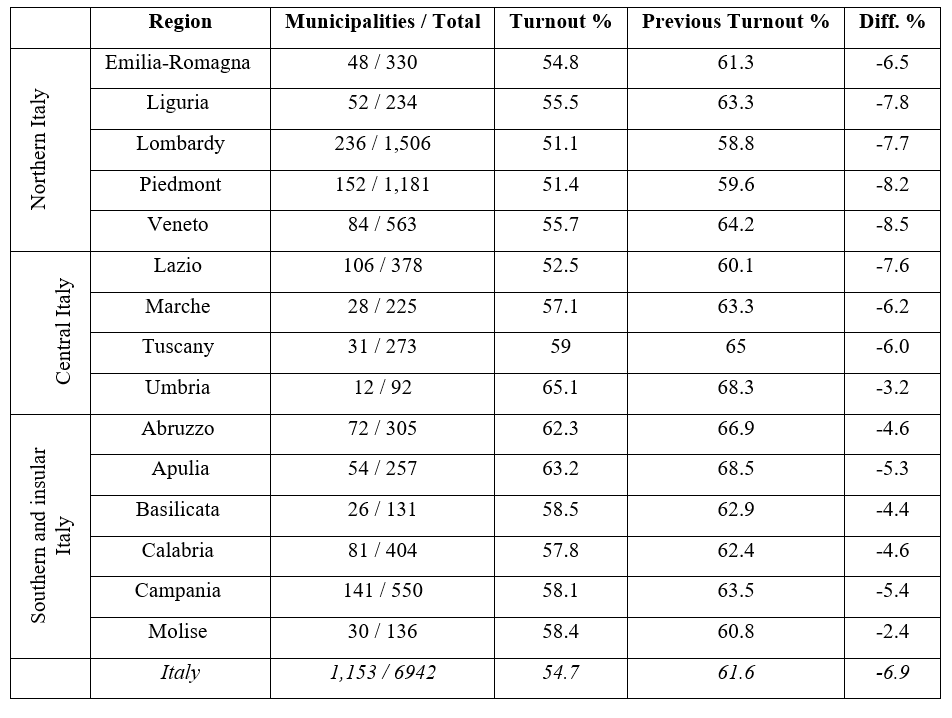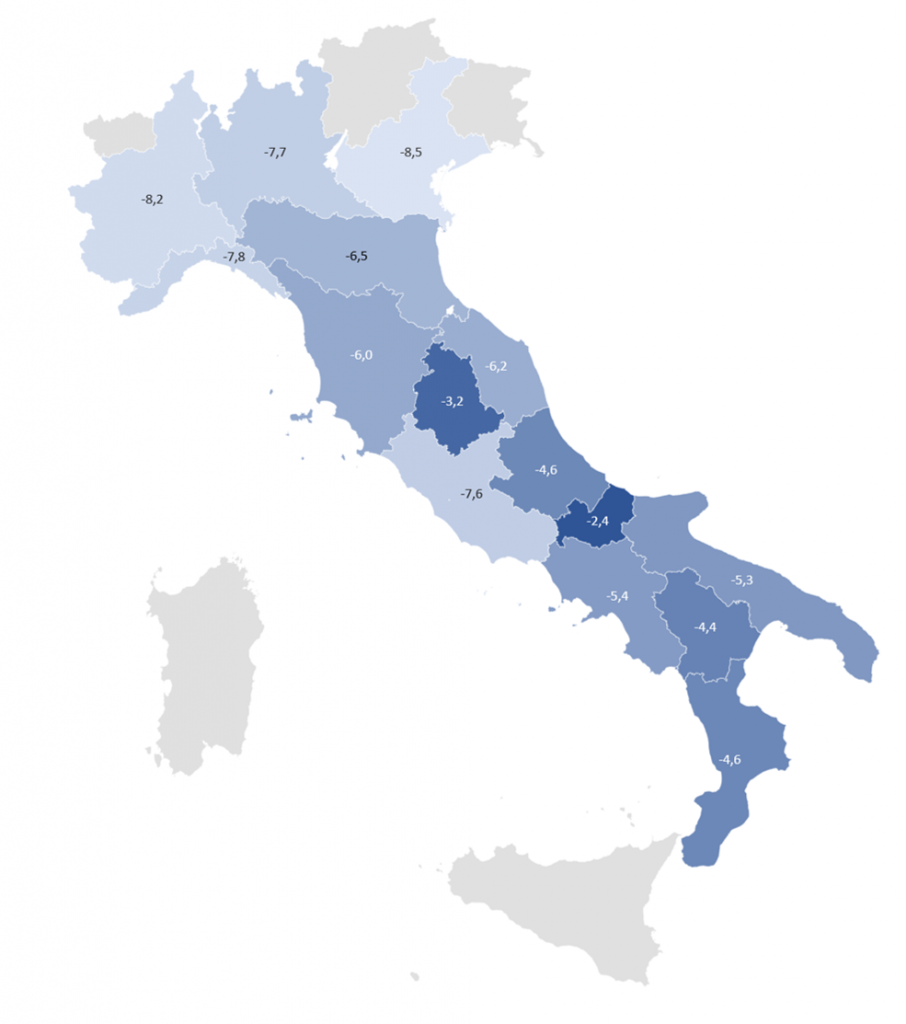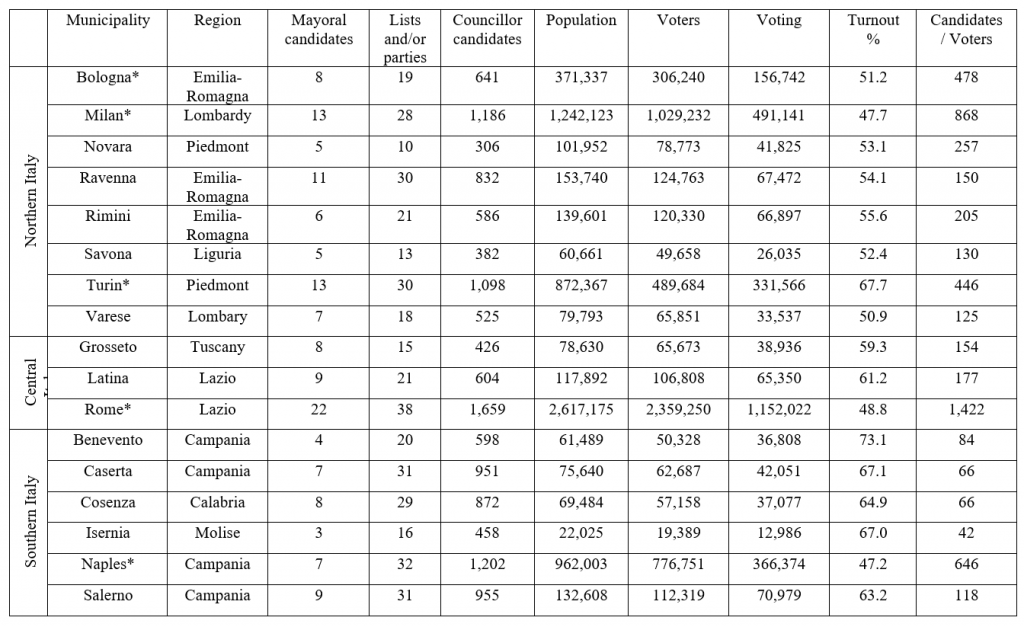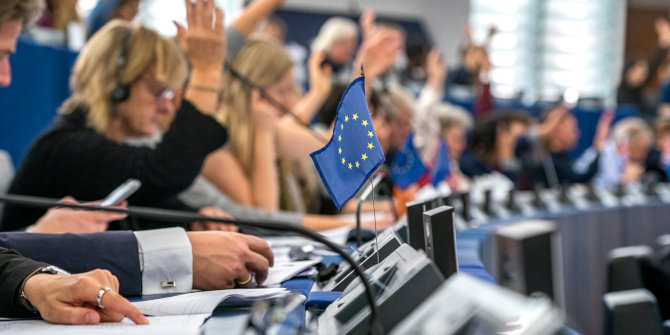Municipal elections were held in Italy on 3-4 October, with a further ballot being held in 65 municipalities on 17-18 October. Marino De Luca assesses what lessons can be learned from participation rates in the elections.
On 3 and 4 October 2021, votes were cast in Italy for the direct election of mayors and municipal councils. This involved 1,191 municipalities (1,153 in the 15 regions with ordinary statutes and 38 in the region with a special statute, Friuli Venezia Giulia) for 12,147,040 voters distributed over 14,505 sections.
In particular, there were elections in 19 provincial capitals, of which six were also regional capitals: Bologna, Milan, Naples, Rome, Turin and Trieste. In 65 municipalities there will be a ballot on 17 and 18 October. The ballot, in the Italian legal system, goes ahead in two cases. First, in all municipalities that are called “superiors” – with a population greater than 15,000 inhabitants (in the autonomous province of Trento, this threshold is lowered to 3,000) – if no candidate for mayor has managed to obtain 50%+1 of the valid votes in the first round; and second, in municipalities with fewer than 15,000 inhabitants (3,000 in the autonomous province of Trento), if the first round ended with a tie between two candidates.
Turnout rates
On average the turnout was below the 55% threshold in the municipalities where the vote was taken, almost seven percentage points lower than in the 2016 administrative elections. The aggregate data in Table 1 for the Italian regions shows that the decline is more sustained in the north, while in the south it is more contained.
Table 1: Turnout during the elections held on 3-4 October 2021 (regions with ordinary statute)
Note: *Election day 10–11 October. Source: Ministry of the Interior
Abstentionism in these elections revolved around three leading causes. First, the tendency to participate only in the elections considered most important: generally, the turnout is much higher in political elections than in administrative ones. Second, the substantial similarity between the proposals of the various candidates and different coalitions, with the consequence that the victory of one or the other would have little impact on the lives of citizens. And third, the crisis of the parties, which are no longer able to mobilise voters and bring them to the polls.
Figure 1: Difference in turnout between the 2016 and 2021 elections (regions with ordinary statute)
Source: Ministry of the Interior
The data concerning the relationship between the number of aspiring councillors and voters is interesting. Table 2 shows the number of aspiring municipal councillors in the 19 provincial capitals (six regional capitals) and other demographic variables.
Table 2: Councillor candidates during the elections held on 3-4 October 2021 in 19 provincial capitals (regions with ordinary statute)
Note: *Regional capital. Source: Ministry of the Interior
In the municipalities of the southern capitals, the turnout rate is higher – with the sole exception of Naples, which seems to conform to the pattern of the other two large Italian metropolises – but the ratio between the number of candidates and voters is very low. In fact, for example, in Caserta and Cosenza – respectively, the cities of Campania and Calabria – there are very low ratios: one candidate for every 66 voters. Isernia has one candidate for every 42 voters. In contrast, northern towns have variable relationships that go from one candidate for 125 voters in Varese to one candidate for 868 voters in Milan. This capillarity of the vote in South Italy somehow seems to have made the turnout figures resistant to collapse, as happened in the northern regions with fewer aspiring councillors.
Preference and participation
This shows how, beyond the increase or decrease in the probability of victory of mayoral candidates or the obtaining of a position in the city council, the high number of aspiring councillors entails more significant pressure on the “forced” voters in some contexts to express a preference for a councillor who they surely know personally. There is almost always a clear correlation between preference (choice of a candidate for city councillor) and electoral participation, which can be explained by the fact that the voter is interested in voting to express a preference for the “close” candidate.
For many southern citizens, interest in this electoral occasion was undoubtedly aroused by the desire to contribute, through their vote, to the election of a candidate for councillor. And it is precisely participation in the poll, for the reasons that can enlarge or restrict it, that is perhaps the most characterising element of the diversity of behaviours determined by the system for the election of mayors.
Participation also underlines how important electoral consultation is. The greater the participation, the greater the significance citizens attach to the election. From this data, we could affirm that municipal elections are more critical than political elections in the south, subverting the recognised order attributed by political theory and practice: political elections first, and then all the others.
Note: This article gives the views of the author, not the position of EUROPP – European Politics and Policy or the London School of Economics. Featured image credit: Niccolò Chiamori on Unsplash







